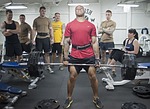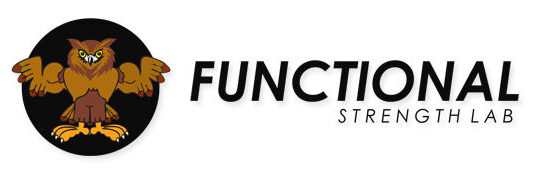
The deadlift is the ultimate functional strength movement. Your entire musculoskeletal system is called into action to complete this complex, compound movement. All major muscle groups are activated, and extremely heavy loads can be lifted…or at least they can be, when you train regularly and practice proper form at all times. In addition to training and proper form, however, there are a number of other tips that can help you increase your deadlift max. (Note: Please remember that the deadlift can be a very dangerous and complicated lift. This lift should be reserved for expert lifters, and should only be performed under the supervision of certified lifting instructors or strength coaches.)
- Use Wrist Wraps to Attempt 100%+ of Your Unaided Max – The limiting factor on nearly everyone’s ability to improve their deadlift max is their grip strength. While it is critical to eventually improve your grip strength to improve your deadlift max, it’s also critical to push your other muscle groups past their comfort zone while you are improving your grip. During this phase, it’s recommended that wrist wraps be used to enable heavier weights to be lifted (than without wrist wraps). This will help to super load the quads and hips which would be impossible with the limitation of your grip strength.
- Deficit Pulls With Sub-Max and Rack Pulls With Max-Plus – Two of the best ways to break a deadlift max plateau is incorporating deficit pulls and rack pulls into your lifting routine. Deficit pulls are typically performed on a short box (or stacks of 45s) with a lower than usual deadlift weight. This movement increases the range of motion of the standard deadlift, and promotes stimulation of new muscle groups. Rack pulls by contrast are limited range deadlifts that allow for lifting weights far greater than your deadlift max. Rack pulls are basically performing the last 20% of the deadlift motion with your weight starting on a squat rack. This allows for large amounts of weight to be lifted to shock yourself out of your plateau.
- Front Squats – One of the major muscle groups activated in a standard deadlift are the quads. And what’s the fastest way to improve your quad strength? Go heavy on lifts that blast your quads! For this task, there is no better option than the front squat – either clavical loaded or Zercher method.
- Hips, Hips, Hips – One of the most under-addressed muscle groups in any workout routine are the hips. Because the hips are so critical for the deadlift motion, it is unusual that most people ignore this muscle group in the gym. How do you correct this? Well, one of the best ways to activate the hips is adding the four-way hip machine into your next workout. Another, albeit more advanced option, is including pistol squats into your leg days. Focus on squatting back on your one leg, as though you are sitting back into a lawn chair. This force activates your hip muscles and will help you to improve your deadlift max.
- Focus on the Push, and not the Pull – I’ve found that in my own deadlift motion, I often subconsciously focus on explosively pulling the weight from the ground. My greatest successes, however, come when I’m focusing on explosively pushing my heels and hips into floor on the initial movement. Mentally, I envision blocking a defensive lineman without using my hands. This vision has always helped add a few more pounds onto my reps and max. Try it out on your next lift and let me know what you think.
Do you want a safe way to estimate your deadlift max, without having to perform dangerously heavy deadlifts? Check out FSL’s DeadLift Max Calculator to determine your estimated deadlift max — based on 7 separate max formulas! You can also find FSL’s Big Three Max Calculator (Squat, Deadlift, Bench) under the Workout Calculator Tab. Please feel free to submit your successes and findings in the comments below!
You can also Sign Up Below for our mailing list to receive Your Free Copy of FSL’s Quantified Self: Downloadable Workbooks. These files are Excel worksheets with preloaded formulas. They allow you to plug in your own information to follow your performance and track your fitness results!
